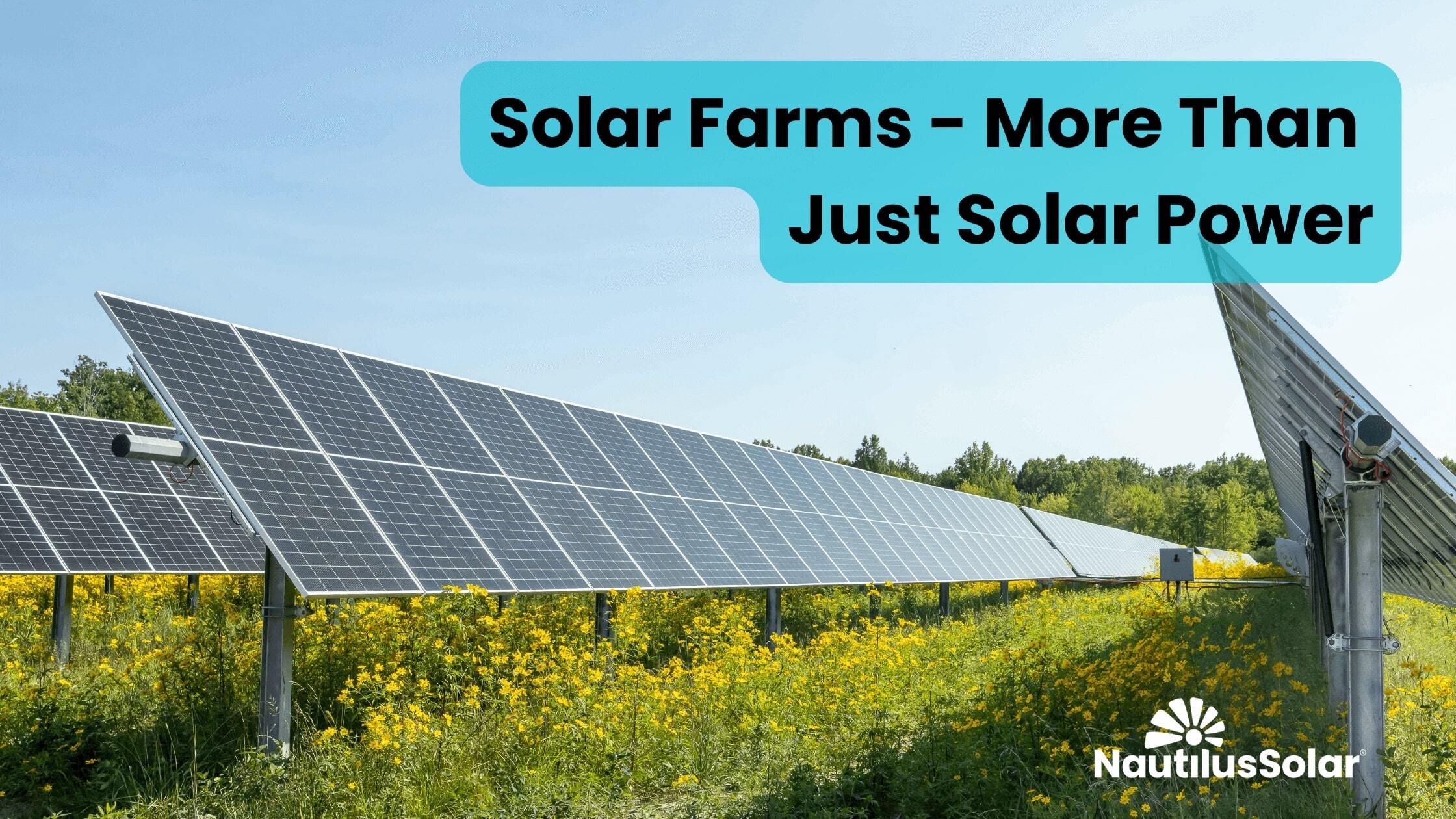Solar Grazing🐑
One innovative way to maximize land use is through solar grazing. In this model, sheep feed on native grasses around solar sites, boosting rural economies and supporting the animal agriculture industry. This keeps the grass low and prevents it from shading the solar panels, while providing open space for farmers to graze their livestock.
Sheep are the most commonly used grazers in the solar industry. While goats and cattle are also used, they’re often avoided. Goats tend to chew on wires and equipment, which can damage solar technology.
.jpg?width=450&height=300&name=Sheep%20in%20community%20solar%20farm%20field%20(1).jpg) The American Solar Grazing Association (ASGA), a farmer-founded and led organization, supports nation-wide solar grazing with over 1000 members across 45 states. In this field, work is being done to develop standards that simultaneously support both solar developers and shepherds. In the fall of 2024, the ASGA released the first-ever solar grazing documentary that showcases solar grazing through the stories of two farmers.
The American Solar Grazing Association (ASGA), a farmer-founded and led organization, supports nation-wide solar grazing with over 1000 members across 45 states. In this field, work is being done to develop standards that simultaneously support both solar developers and shepherds. In the fall of 2024, the ASGA released the first-ever solar grazing documentary that showcases solar grazing through the stories of two farmers.
Solar grazing is just one example of how this land can be thoughtfully multi-purposed.
Pollinator Habitats🌻
The best time of the year is when solar farms are in full bloom and buzzing with life. During the summer and fall seasons, solar farms transform into safe havens for a variety of bees, butterflies, and insects. Native wildflowers and plants also grow around solar panels, enhancing local biodiversity. For nearby farmland, these pollinators can lead to enhanced agricultural production and are critical to the health of native plant growth, fostering ecological biodiversity in communities.
The benefits of pollinator gardens include improved soil health, reduced erosion, and can boost crop yields for local farmers. These pollinator sites benefit both solar developers and local agriculture efforts.
Repurposing Degraded Land
.jpg?width=450&height=338&name=Unusable%20Land%20Solar%20Farm%20Photo%20(1).jpg)
Many of our solar farms are constructed on land that is degraded, such as old landfills, toxic waste sites, and mines. For example, Nautilus Solar operates the Altamont Solar Farm in New York, built on an old army depot that was in use from 1941 to 1969.
This land is virtually unusable due to toxic contaminants in the soil. With the implementation of above ground solar and wiring, this land has been repurposed to generate sustainable energy for the local electric grid.
In another instance, Nautilus revamped a site in Sanford, Maine. Previously, this land was home to CGA Inc., a circuit board recycling facility. This heavily contaminated brownfield site had environmental hazards impacting the community and 4,000 tons of waste were removed prior to solar development.
Instead of leaving land lifeless, solar farms can introduce new energy sources to local electricity grids.
Agrivoltaics🌱
In recent years, agrivoltaics have also been significant when discussing solar power. Farmers can benefit from growing crops under and between rows of solar panels, helping crops and life in the solar farm thrive. Hidden under the panels, plants can benefit from reduced water evaporation during the summer months and improved annual crop production while using less water.
Agrivoltaics is a way to maximize large plots of land, which both agricultural and solar energy industries need to successfully harvest crops and the sun.
Solar power is about more than just solar panels. This is a way to sustainably contribute to the grid, agriculture, and local biodiversity. Solar farms are safe havens for farm animals, crops, and pollinators, while still producing lots of energy for your local electric grid.
Community solar is an easy way for residents and businesses to save money on electric bills without the hassle of installing solar panels. By joining a local community solar farm, you're not only lowering your utility bills, but also supporting responsible land use.


.png)

.png)
.jpg?width=450&height=300&name=Sheep%20in%20community%20solar%20farm%20field%20(1).jpg) The
The .jpg?width=450&height=338&name=Unusable%20Land%20Solar%20Farm%20Photo%20(1).jpg)
